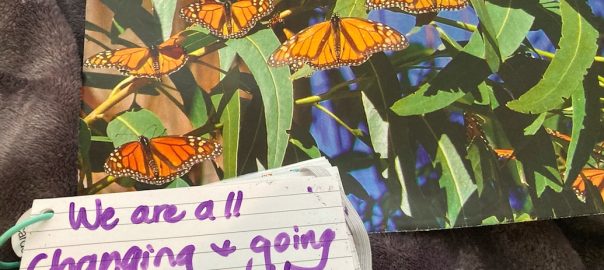Sometimes ideas are difficult to wrap our minds around — that we may have never seen someone complete a task in a particular way, so it seems unusual or difficult to try. Or, a person may have never thought about an activity they already do in an additional context.
Example: everyone I know communicates using a wide range of methods:
- sounds with mouthparts (commonly speaking, but other noises as well),
- facial expressions,
- body movements and gestures,
- visual and text media (such as sharing photos, exchanging text messages, emojis and emotional reactions, writing notes, etc.), and
- references to things outside of themselves (a cardboard roll indicating there’s no more toilet paper, a family calendar or coordinating app, a glance at an empty glass to alert a waiter that more drink is wanted, and so on).
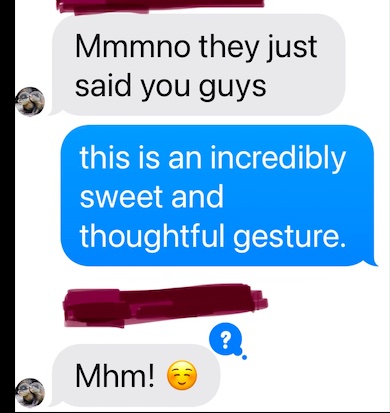
One of my teens types out noises they might make incorporated into their messages — that’s tricky for me since they also have used acronyms to save time and keystrokes. Fortunately, I can use the emotional reaction (represented by a question mark) to convey that I am confused.
My point is: using a wide variety of approaches is not new. It’s part of how everyone communicates all of the time.
All of this also applies when it comes to someone who has dementia (changes to their thinking), or aphasia (changes to language), or does not hear perhaps as well as they once did; and even in situations that are a combination of factors.
My own experience with elder populations is that whether a listener has dementia, aphasia, or no hearing aids: yelling seems to be the most typical go-to strategy. I’m not sure why that is exactly, but it may be that’s what has been seen (with elder populations) and so that’s what gets re-tried.
It may be hard to imagine incorporating other communication methods though if you’ve never seen it before. This isn’t a perfect example, it’s just one illustration of how it might look:
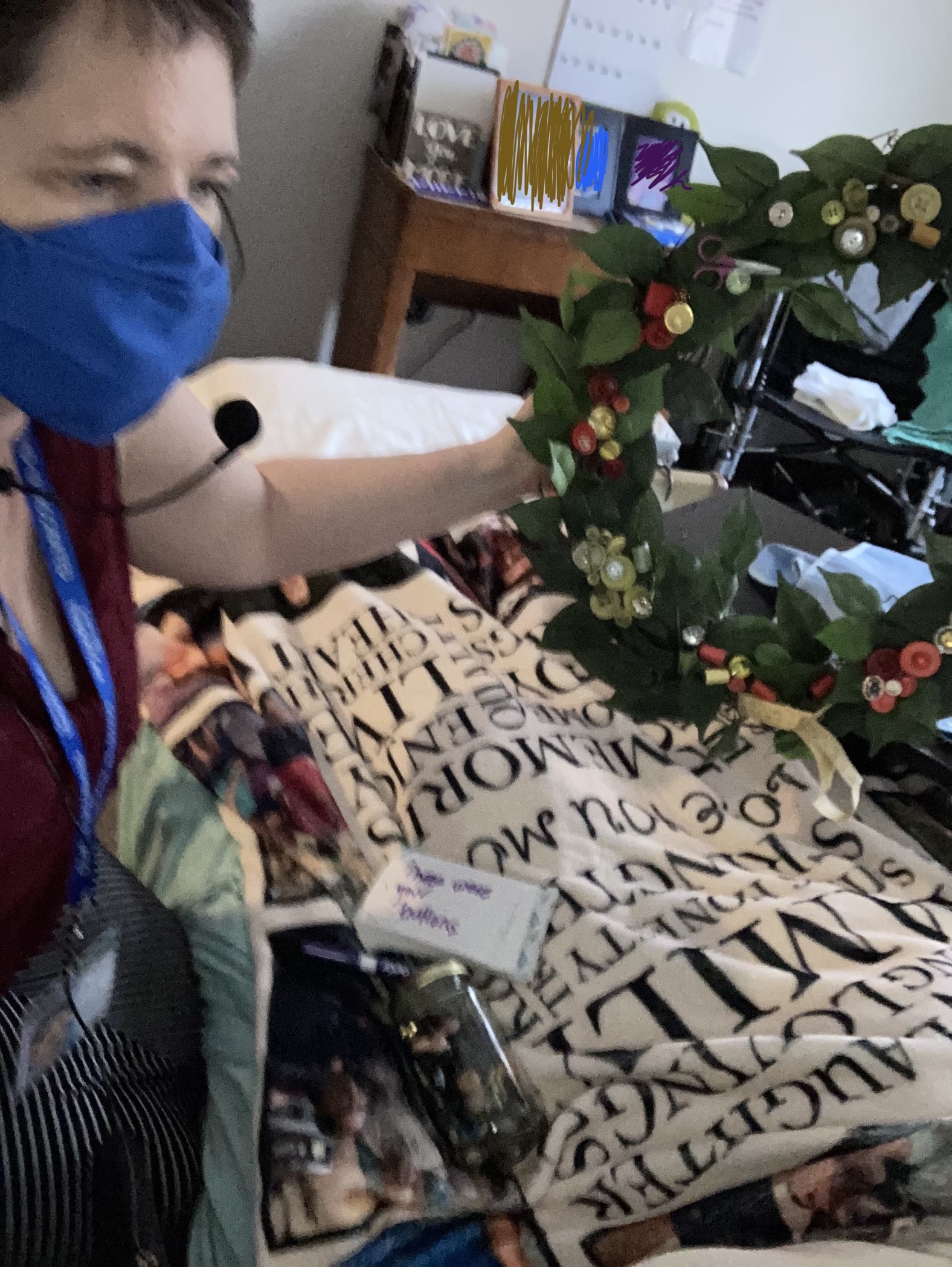
I have written previously on the set of dry erase “flash” cards I have in supporting exchanges. They are easy to hold in my hand and are on a ring so I can flip to a blank card readily in a conversation (without pausing to erase) or refer back to something if needed. It’s also a way for me to gauge messages that are repeated often enough to warrant making a permanent card in the set. I have used letter stickers and typed messages that I affixed with clear packing tape.
A phone’s camera can also be a ready and fast way to share information or provide a visual cue. Taking a photo of the nightstand allowed my friend to tell me what she wanted off of it:
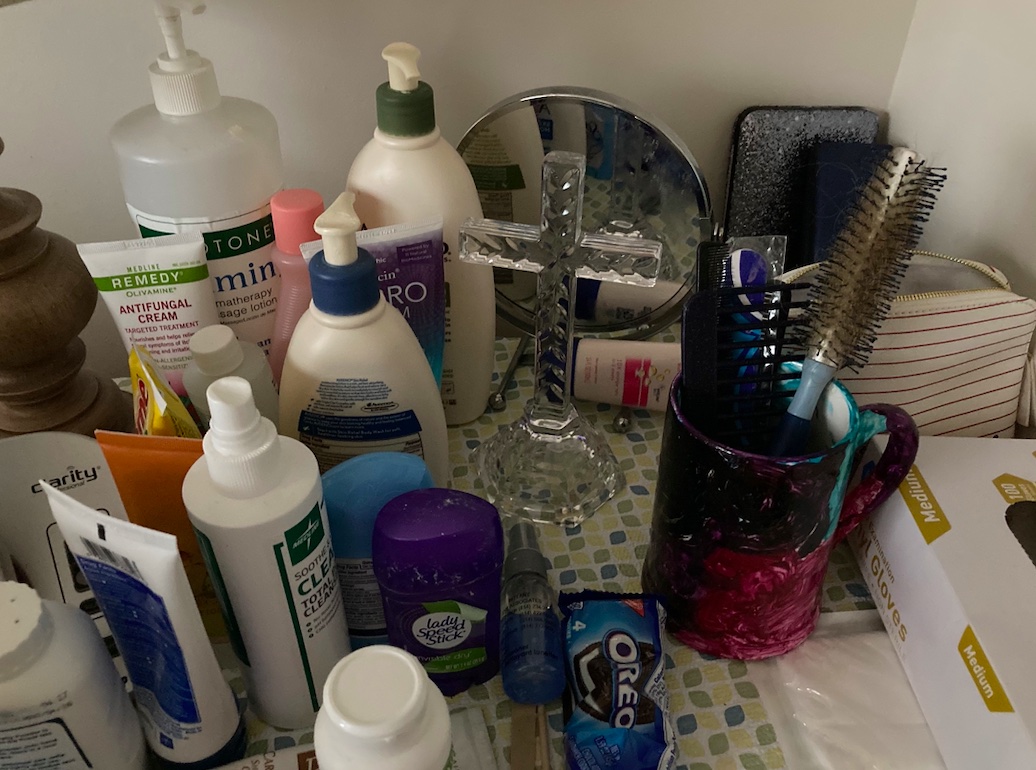
Recently I had a different opportunity to use a standard app on my phone — opening a new Notes page and typing with the largest font in bold allowed a high-contrast, backlit text support which proved more functional than my hand-written ones for an individual who has significant vision impairment.
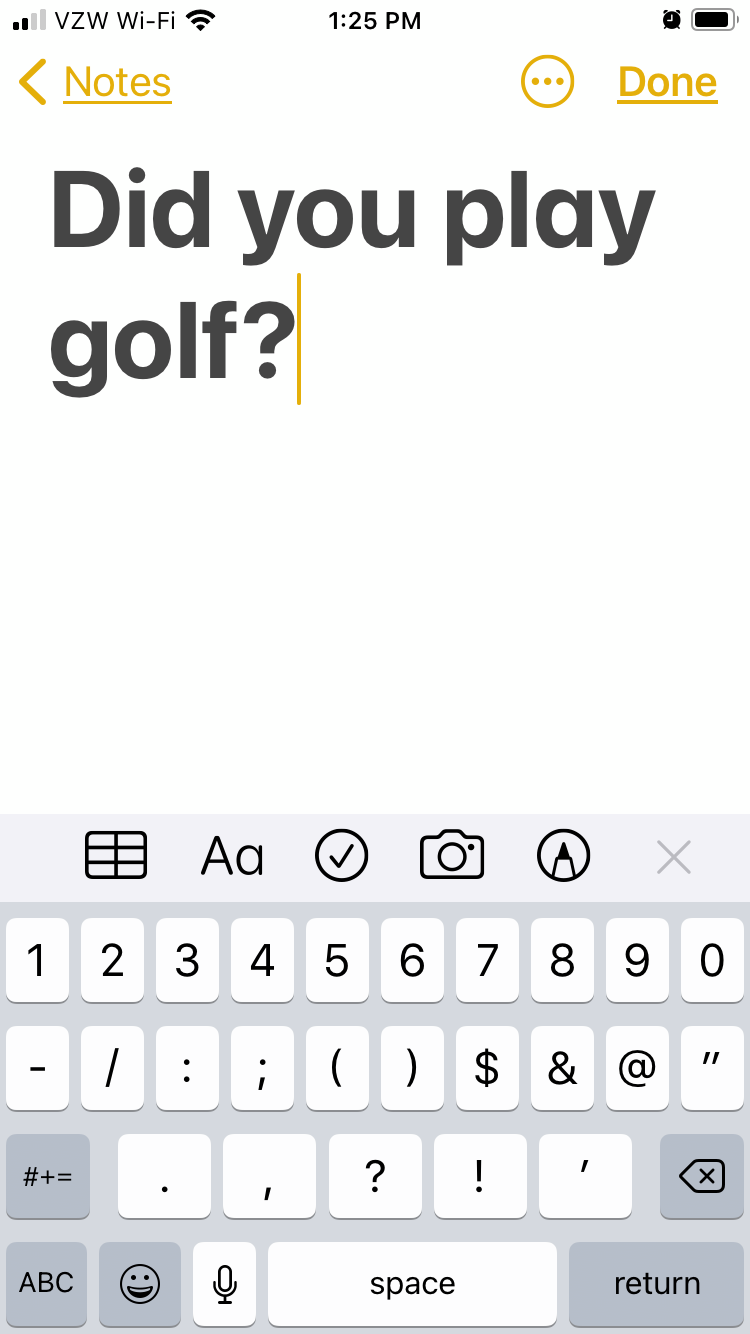
Again, using a wide variety of approaches is not new. It’s part of how everyone communicates all of the time. My point is: to try providing examples of different ways we all already communicate in the additional context of with elder populations.
End blip.
